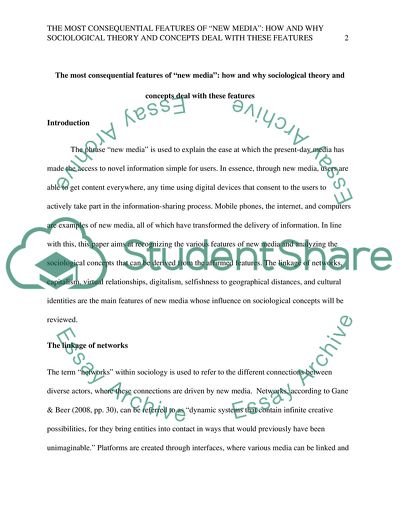Cite this document
(The Most Consequential Features of New Media Literature review Example | Topics and Well Written Essays - 2000 words - 1, n.d.)
The Most Consequential Features of New Media Literature review Example | Topics and Well Written Essays - 2000 words - 1. https://studentshare.org/media/1805362-identify-the-most-consequential-features-of-new-media-and-assess-how-and-why-sociological-theory-and-concepts-deal-with-these
The Most Consequential Features of New Media Literature review Example | Topics and Well Written Essays - 2000 words - 1. https://studentshare.org/media/1805362-identify-the-most-consequential-features-of-new-media-and-assess-how-and-why-sociological-theory-and-concepts-deal-with-these
(The Most Consequential Features of New Media Literature Review Example | Topics and Well Written Essays - 2000 Words - 1)
The Most Consequential Features of New Media Literature Review Example | Topics and Well Written Essays - 2000 Words - 1. https://studentshare.org/media/1805362-identify-the-most-consequential-features-of-new-media-and-assess-how-and-why-sociological-theory-and-concepts-deal-with-these.
The Most Consequential Features of New Media Literature Review Example | Topics and Well Written Essays - 2000 Words - 1. https://studentshare.org/media/1805362-identify-the-most-consequential-features-of-new-media-and-assess-how-and-why-sociological-theory-and-concepts-deal-with-these.
“The Most Consequential Features of New Media Literature Review Example | Topics and Well Written Essays - 2000 Words - 1”. https://studentshare.org/media/1805362-identify-the-most-consequential-features-of-new-media-and-assess-how-and-why-sociological-theory-and-concepts-deal-with-these.


